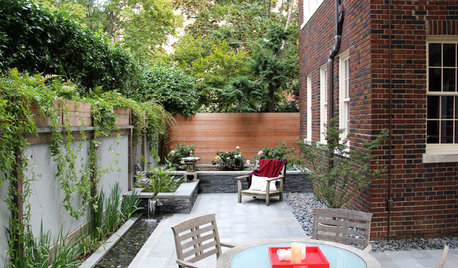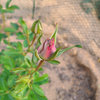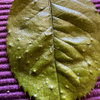Arizona Soil Issues? - Plants Won't Grow
immobilus
11 years ago
Related Stories

GARDENING GUIDESGrow a Beautiful Garden in Alkaline Soil
Got alkaline soil? Learn how to manage it and the many beautiful plants that will thrive in this ‘sweet’ soil
Full Story
PATIOSPatio Details: Dog Won’t Trample the Plants With This Design
An Asian-inspired backyard redo adds clean lines, a new water feature and a sense of spaciousness — with room for a large beloved dog
Full Story
GARDENING GUIDESHow to Stop Worrying and Start Loving Clay Soil
Clay has many more benefits than you might imagine
Full Story
LIFEYou Said It: ‘Put It Back’ If It Won’t Help Your House, and More Wisdom
Highlights from the week include stopping clutter from getting past the door, fall planting ideas and a grandfather’s gift of love
Full Story
GARDENING GUIDESGreat Design Plant: Try Blue Bells for Blooms in Dry Soil
This shrub’s violet-blue flowers and silvery foliage brighten low-water gardens all year long
Full Story
GARDENING GUIDESGrow Your Own Privacy: How to Screen With Plants and Trees
Use living walls to lower your home and garden's exposure while boosting natural beauty in your landscape
Full Story
FARM YOUR YARDHow to Get Good Soil for Your Edible Garden
The nutrients in your soil feed the plants that feed you. Here are tips on getting it right — just in time for planting season
Full Story
GARDENING GUIDESGardening Solutions for Heavy Clay Soils
What’s a gardener to do with soil that’s easily compacted and has poor drainage? Find out here
Full Story
GARDENING GUIDES10 Solutions for Soggy Soil
If a too-wet garden is raining on your parade, try these water-loving plants and other ideas for handling all of that H2O
Full Story
GARDENING GUIDES8 Plants That Snobs Love to Hate — and You'll Love to Grow
Don't dismiss these common annuals, perennials and shrubs — there are reasons they've been popular for so long
Full StoryMore Discussions








rtl850nomore
Haname
Related Professionals
Manorville Landscape Architects & Landscape Designers · Rancho Cordova Landscape Architects & Landscape Designers · Winder Landscape Architects & Landscape Designers · Tempe Landscape Contractors · Brookline Landscape Contractors · Downey Landscape Contractors · East Haven Landscape Contractors · Lantana Landscape Contractors · Whitehall Landscape Contractors · Hawaiian Gardens Landscape Contractors · Arlington Carpenters · Cedar Park Carpenters · Cypress Lake Carpenters · Fair Oaks Carpenters · Tonawanda Carpenterstomatofreak
Pagancat
lazy_gardens
immobilusOriginal Author
tomatofreak
trevorspop
ali62jan
aztreelvr
Linda Golliher